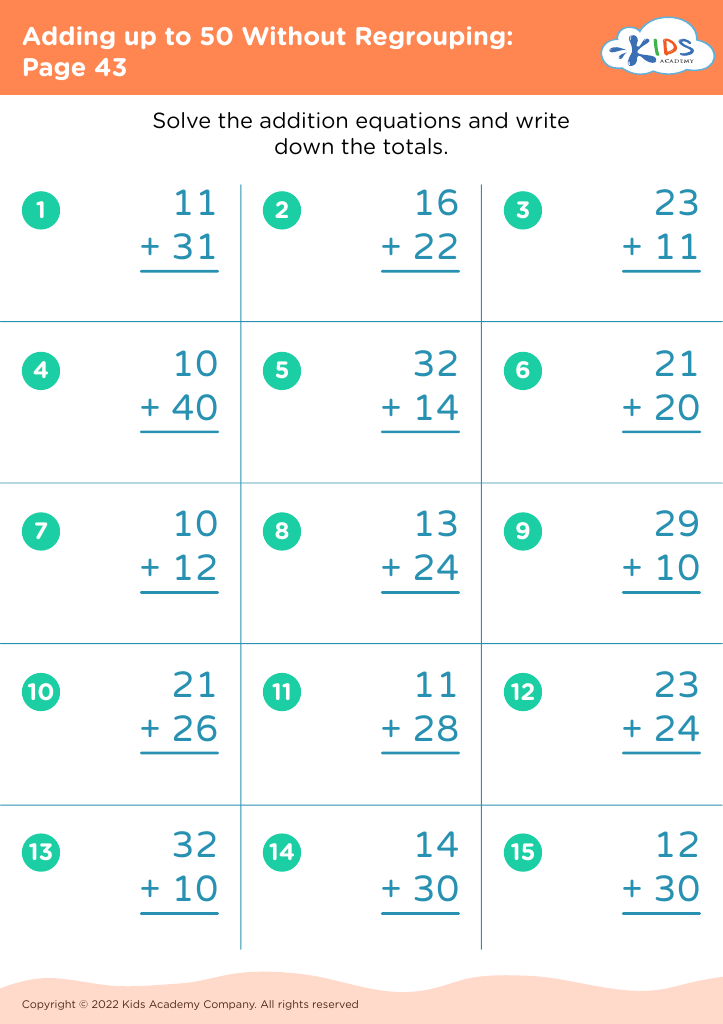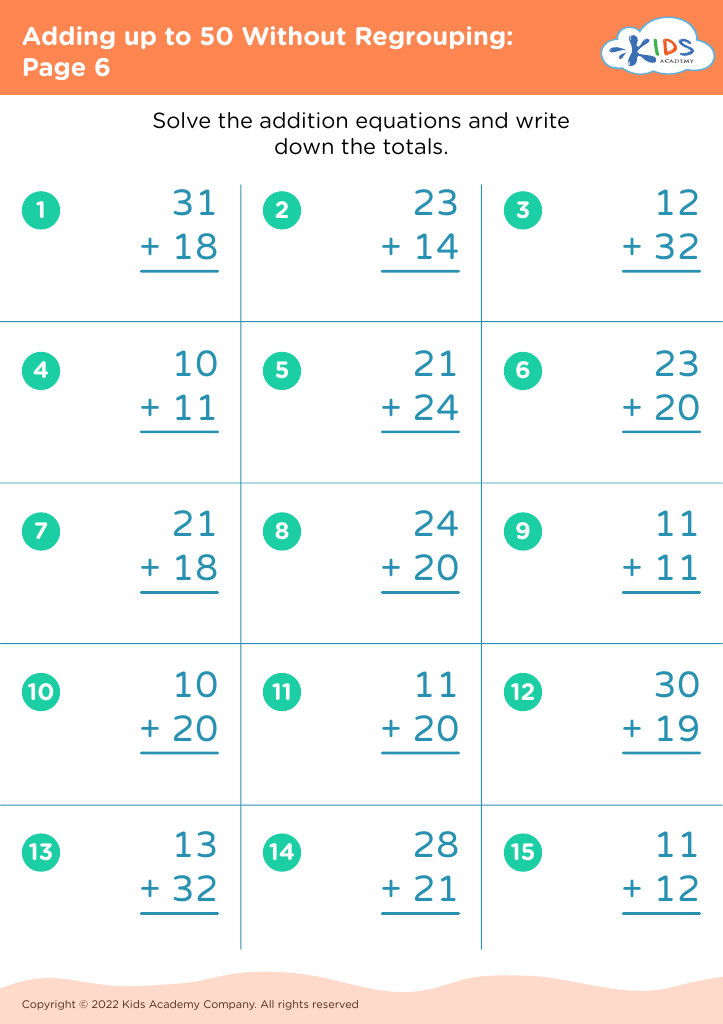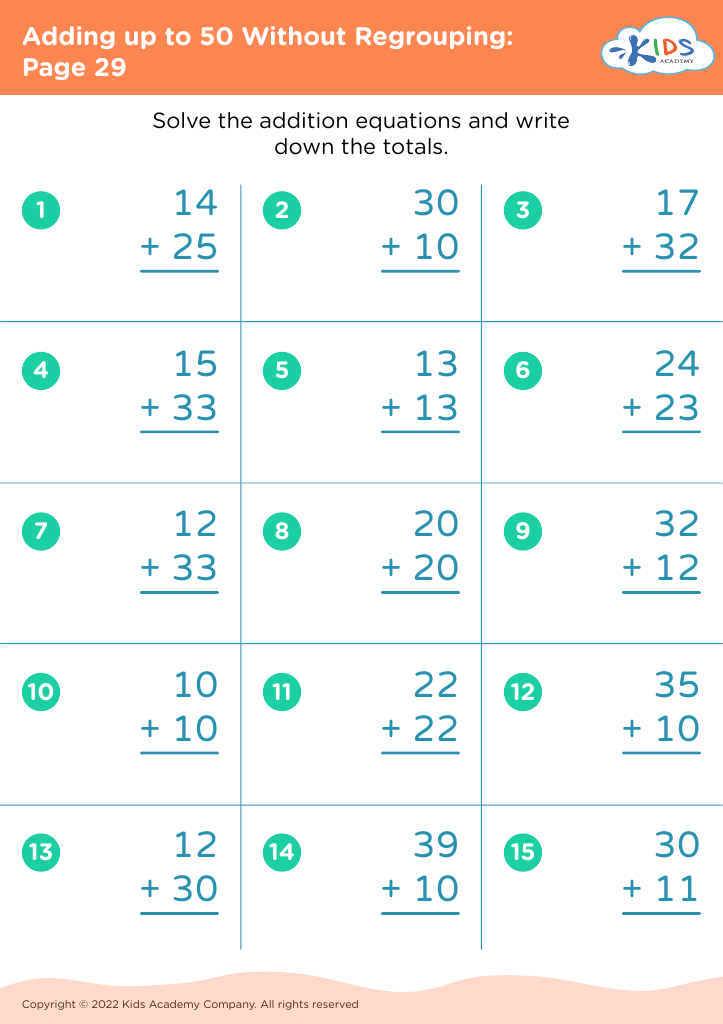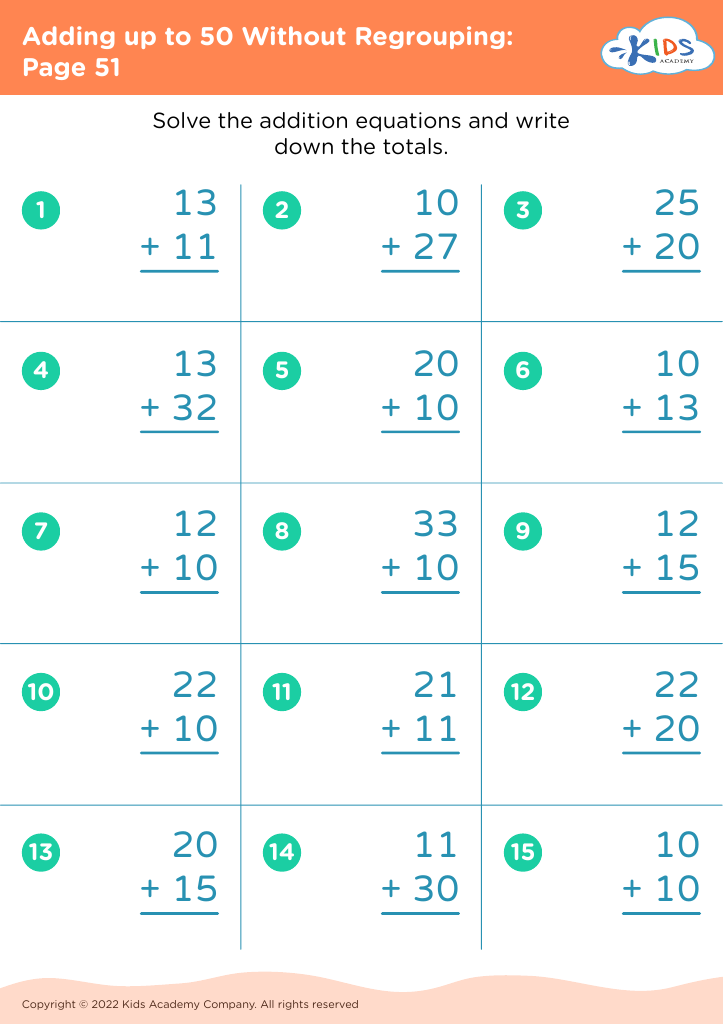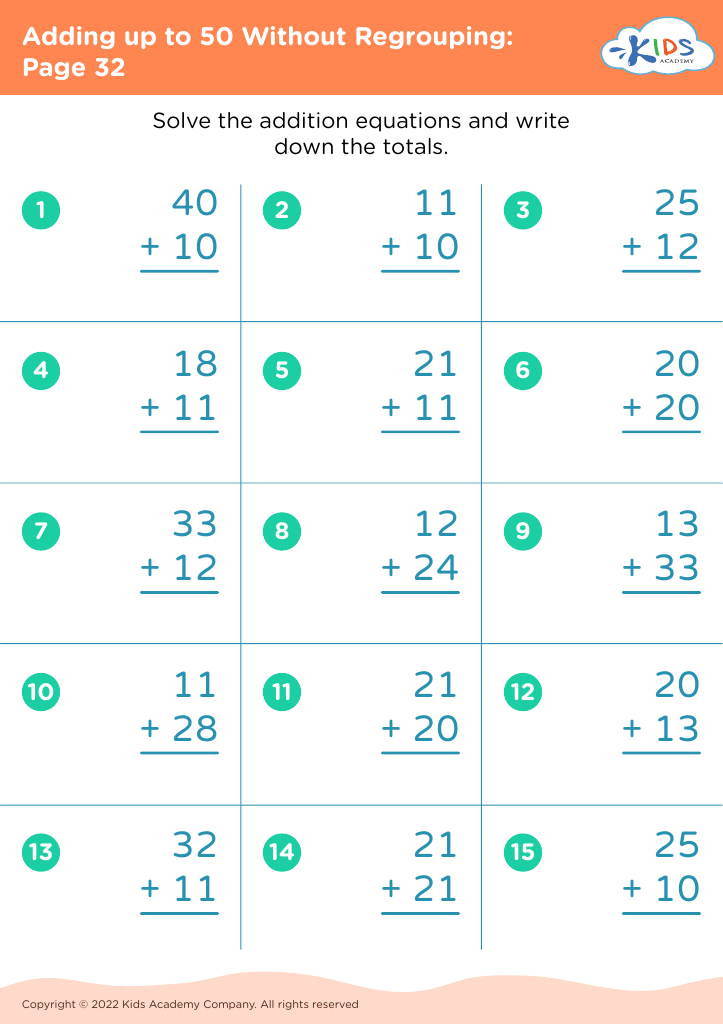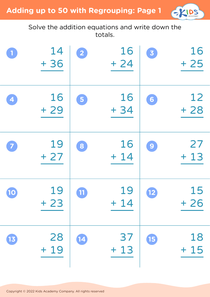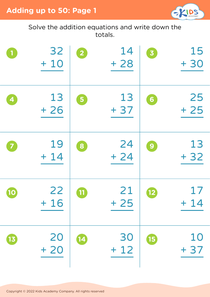Identifying shapes Adding up to 50 Without Regrouping Worksheets for Ages 4-8
6 filtered results
-
From - To
Unlock your child’s potential with our "Identifying Shapes Adding up to 50 Without Regrouping Worksheets for Ages 4-8". These engaging and educational worksheets are tailored for young learners to enhance both their math and shape recognition skills. Children will practice addition up to 50 without the need for regrouping while also identifying various shapes. Perfect for ages 4-8, these printable resources foster fundamental learning in a fun and interactive way. Boost your child’s confidence and mastery in math and geometry with activities designed for their developmental level. Download now to set them on a path to success!
Identifying shapes and adding up to 50 without regrouping are foundational math skills that parents and teachers should prioritize for children ages 4-8. These skills are crucial for several reasons.
Firstly, recognizing shapes helps young learners develop spatial awareness and geometric understanding. Shapes are present in everyday surroundings, so identifying them reinforces observational and analytical skills. This also lays the groundwork for more advanced geometry topics in later education, making students more comfortable when they encounter complex structures.
Secondly, addition without regrouping (carrying over) helps build confidence in basic arithmetic. This fundamental math skill forms the basis for more complicated arithmetic operations. Addition within 50 without regrouping lets children focus on basic number sense, understanding the relationship between numbers, and honing their counting skills. Mastery of these concepts ensures they have a solid foundation before tackling more difficult tasks like addition with regrouping, subtraction, multiplication, and division.
Both sets of skills contribute to a child's overall cognitive development and problem-solving abilities. Furthermore, early success in these areas fosters a positive attitude toward math, making future learning experiences more enjoyable and less intimidating. By emphasizing these skills, parents and teachers help create a strong mathematical foundation, setting children up for academic success.


